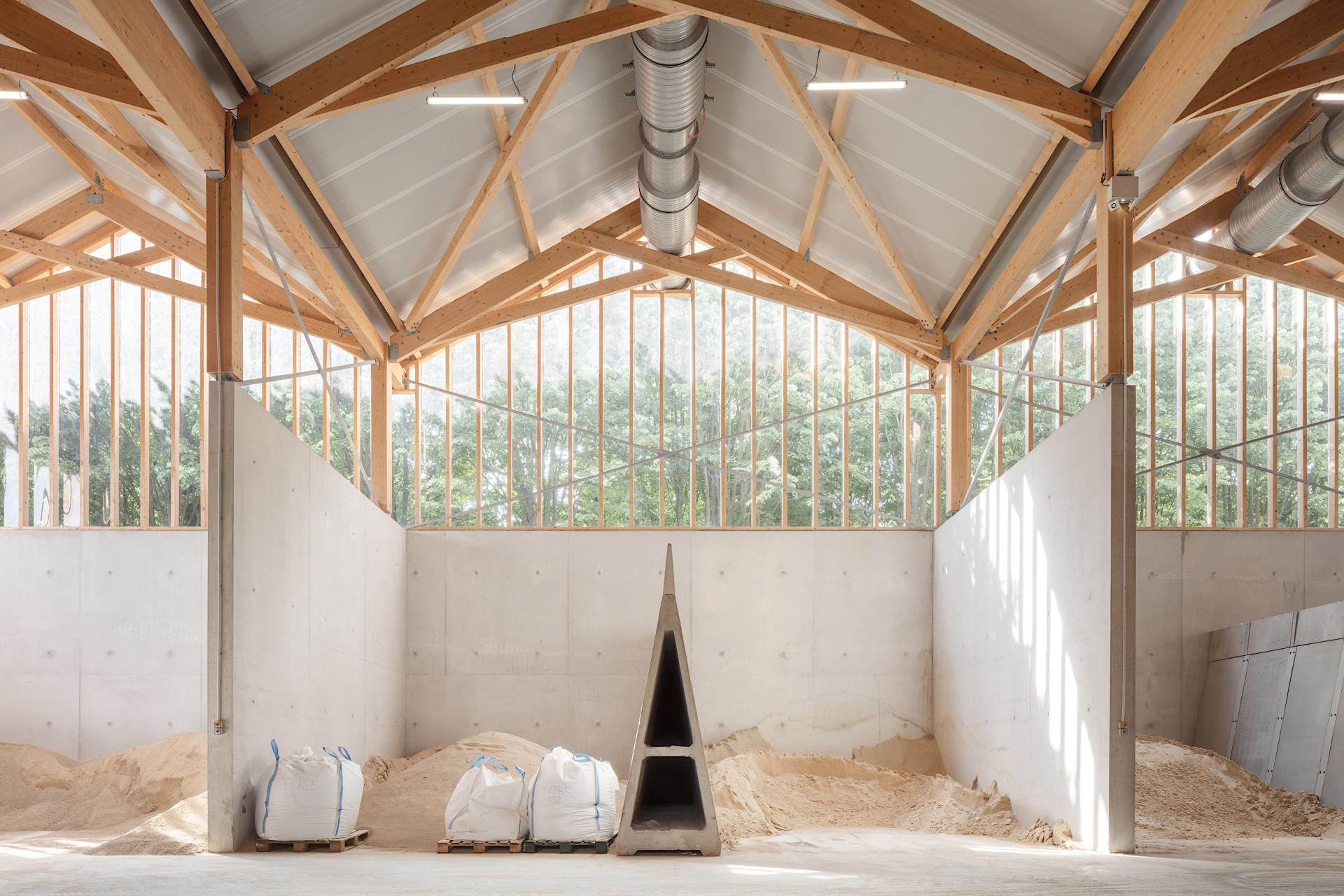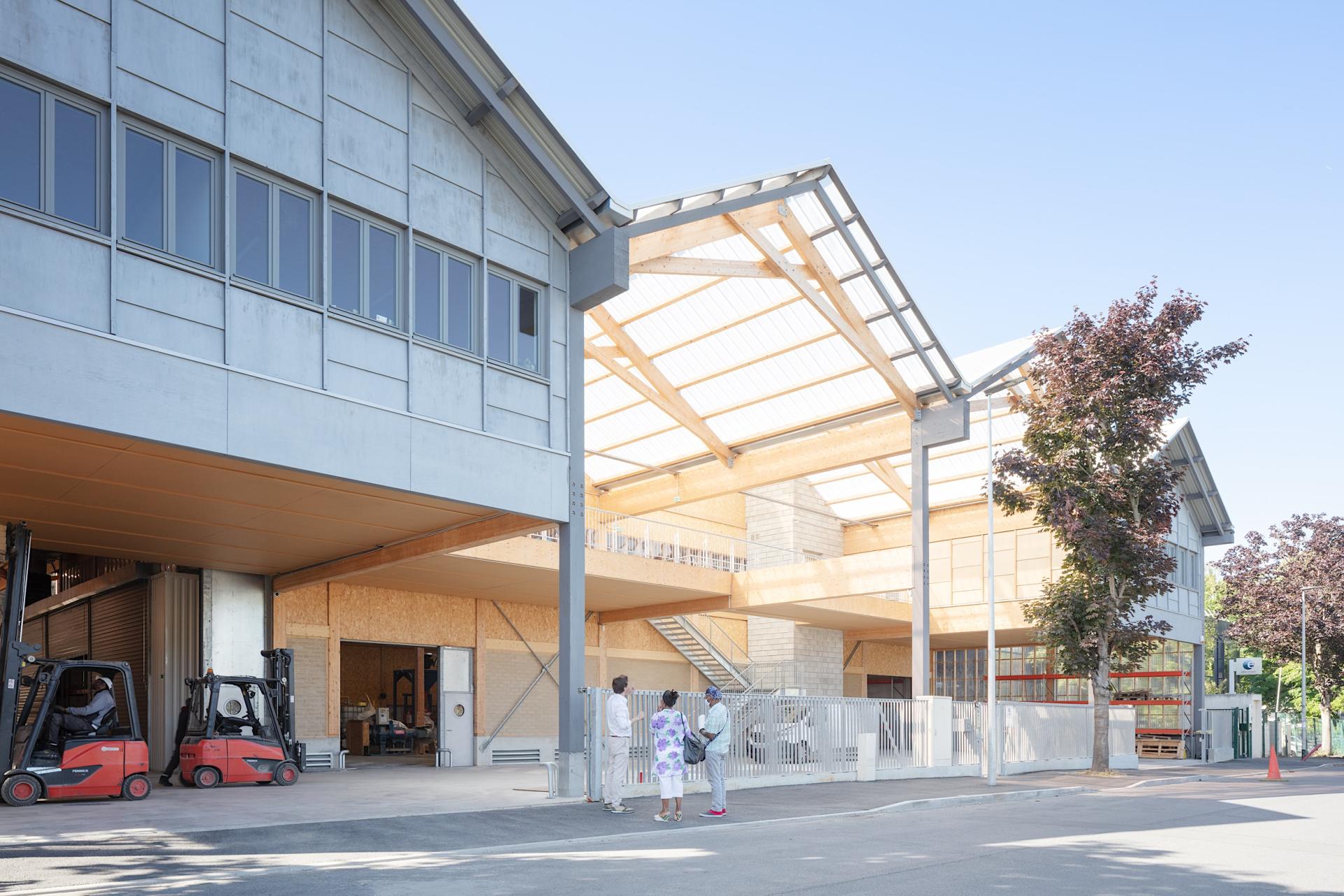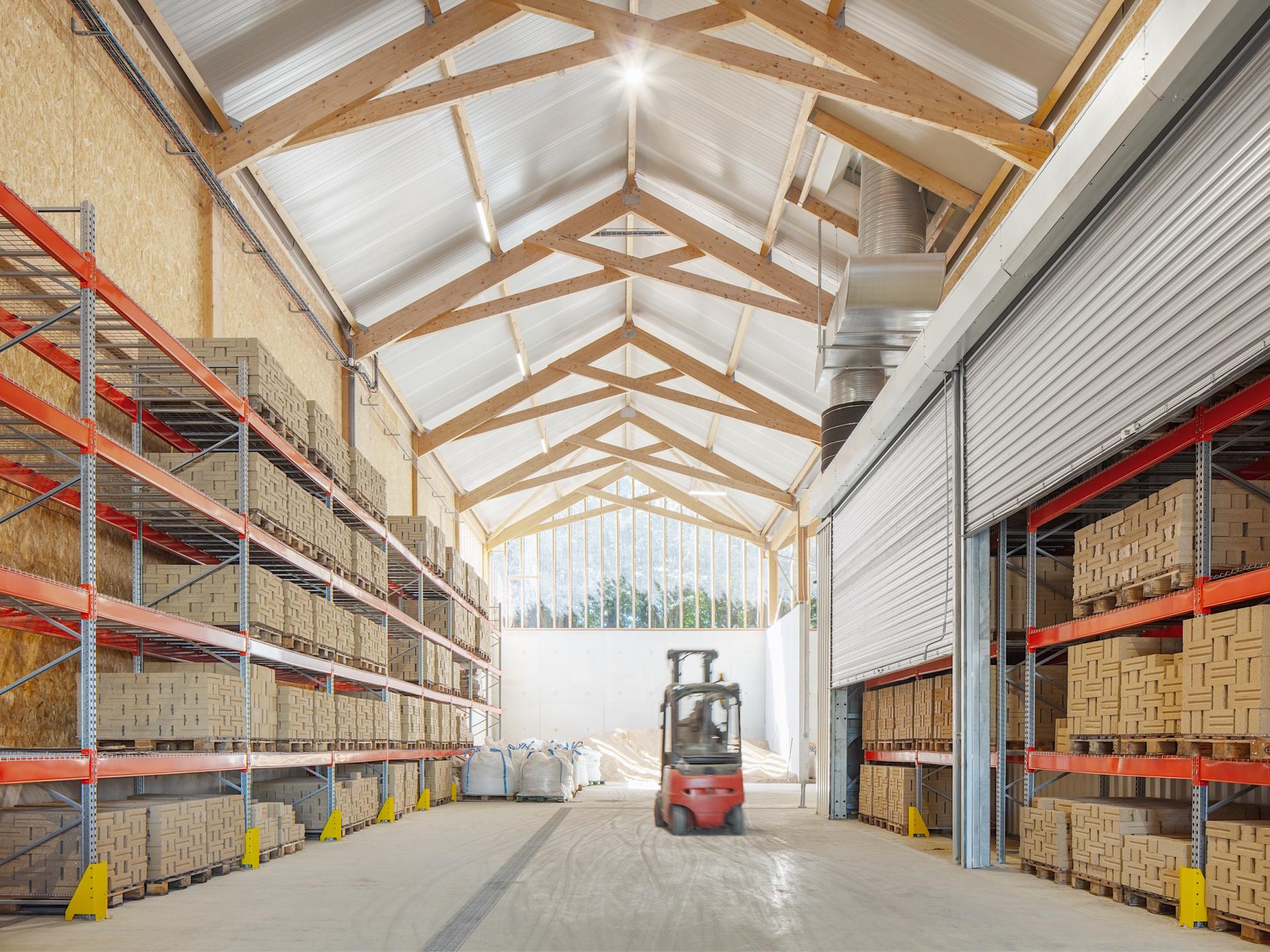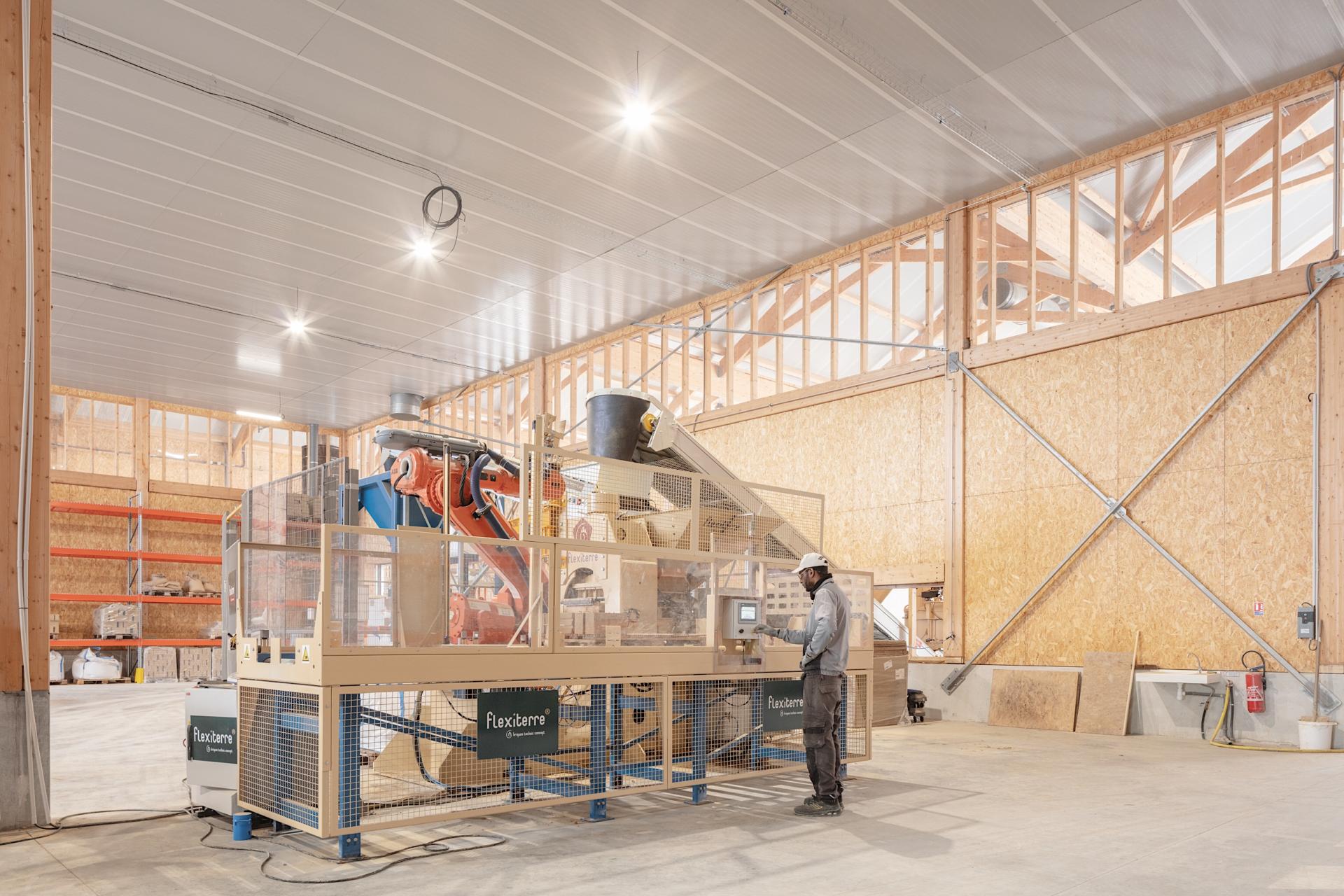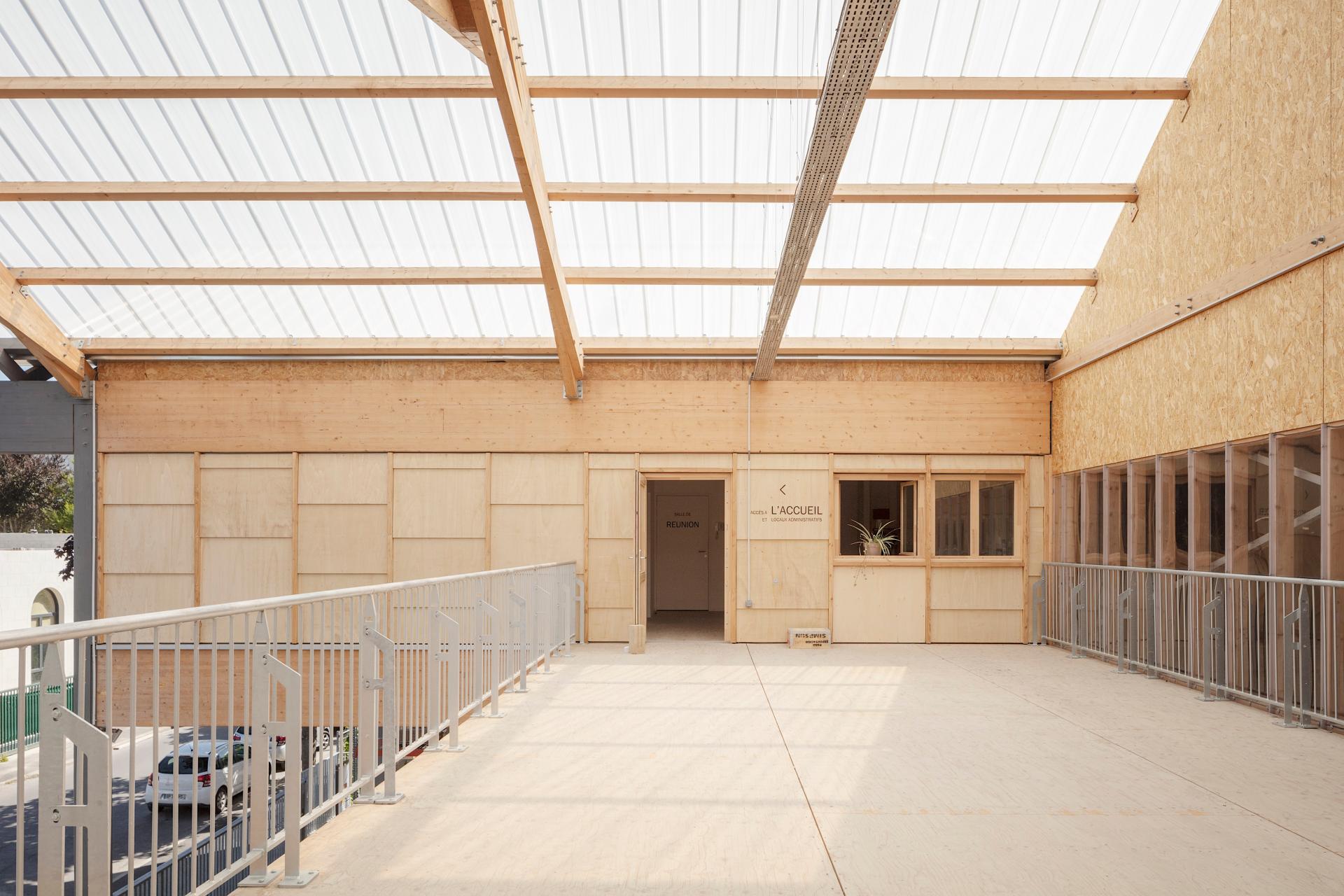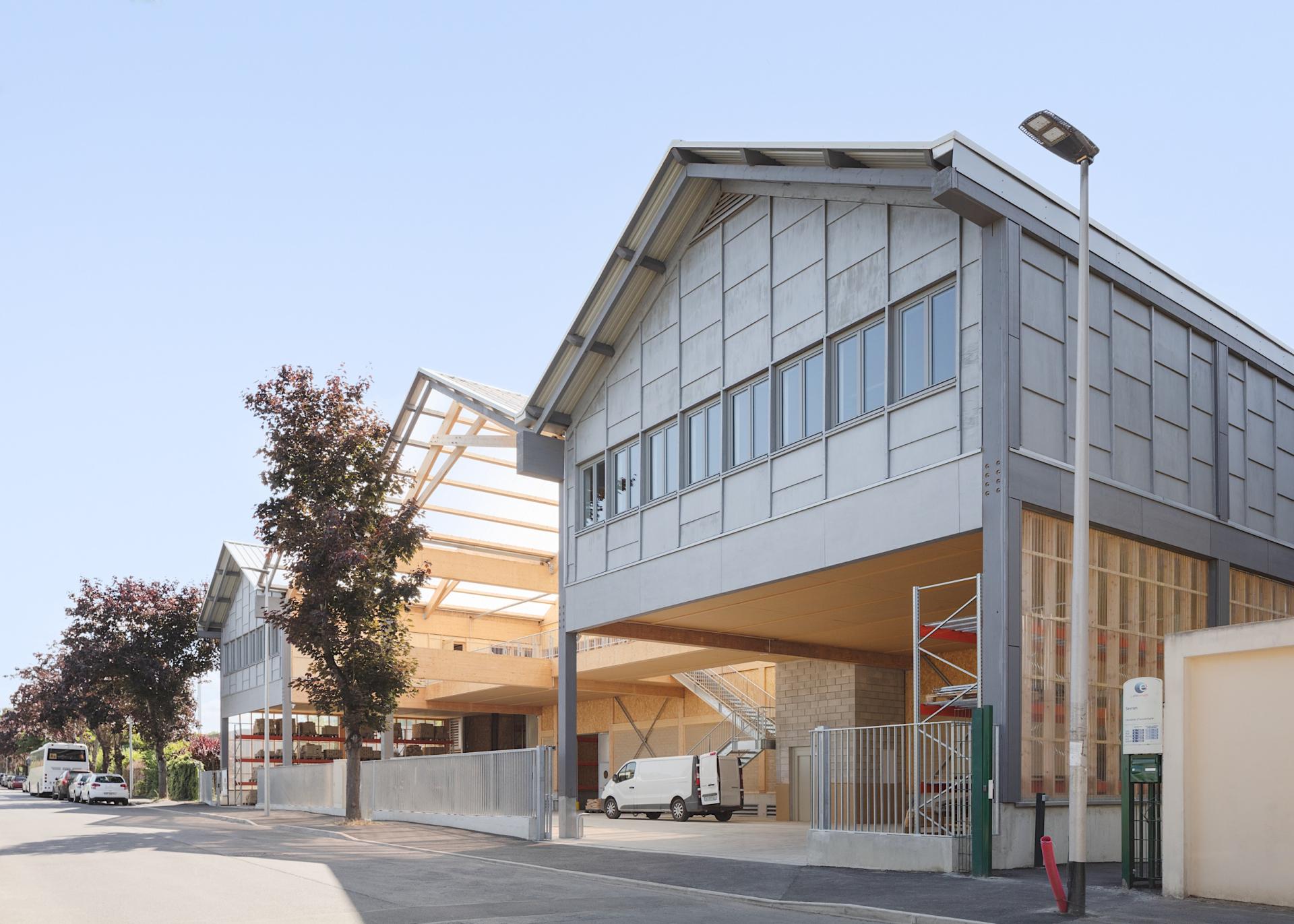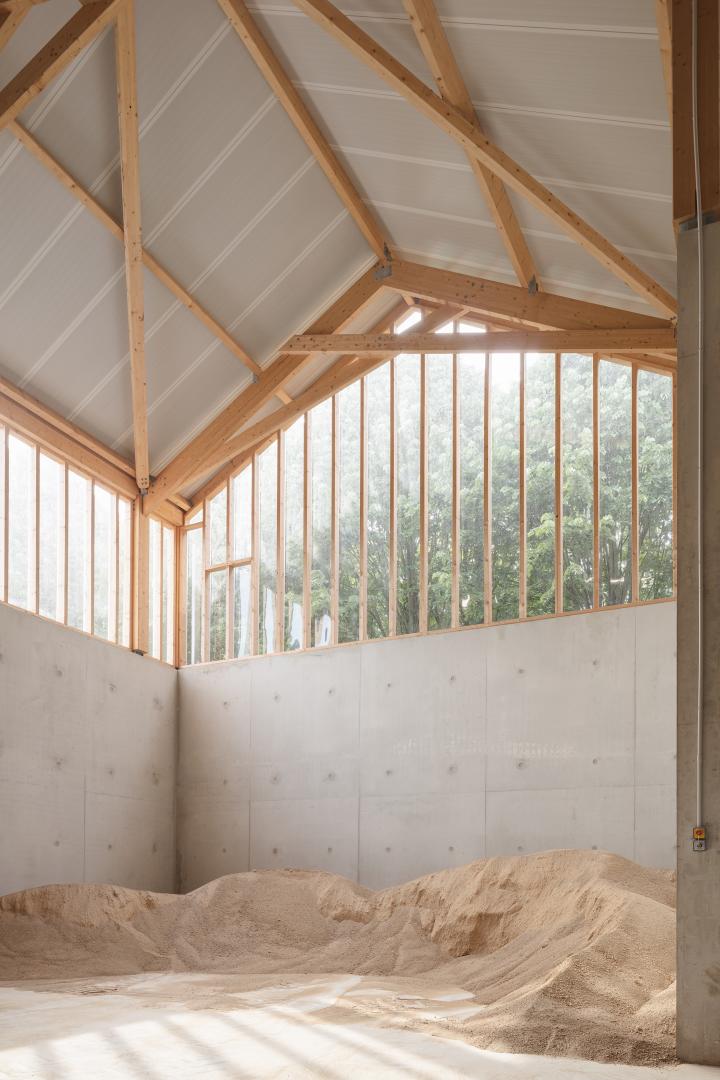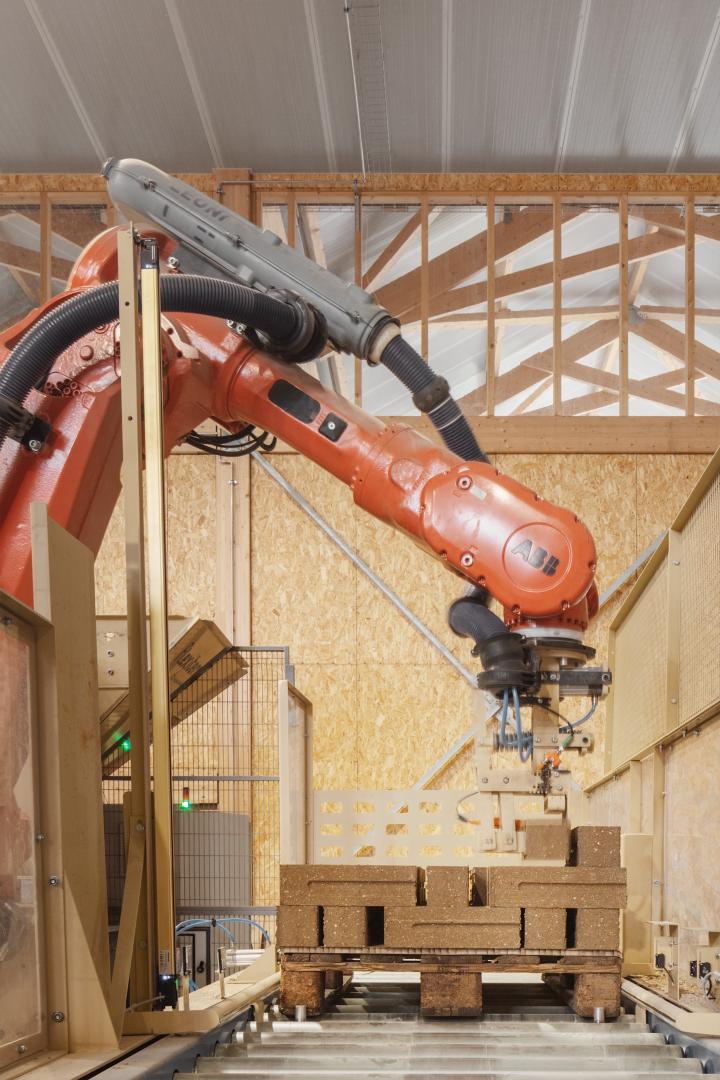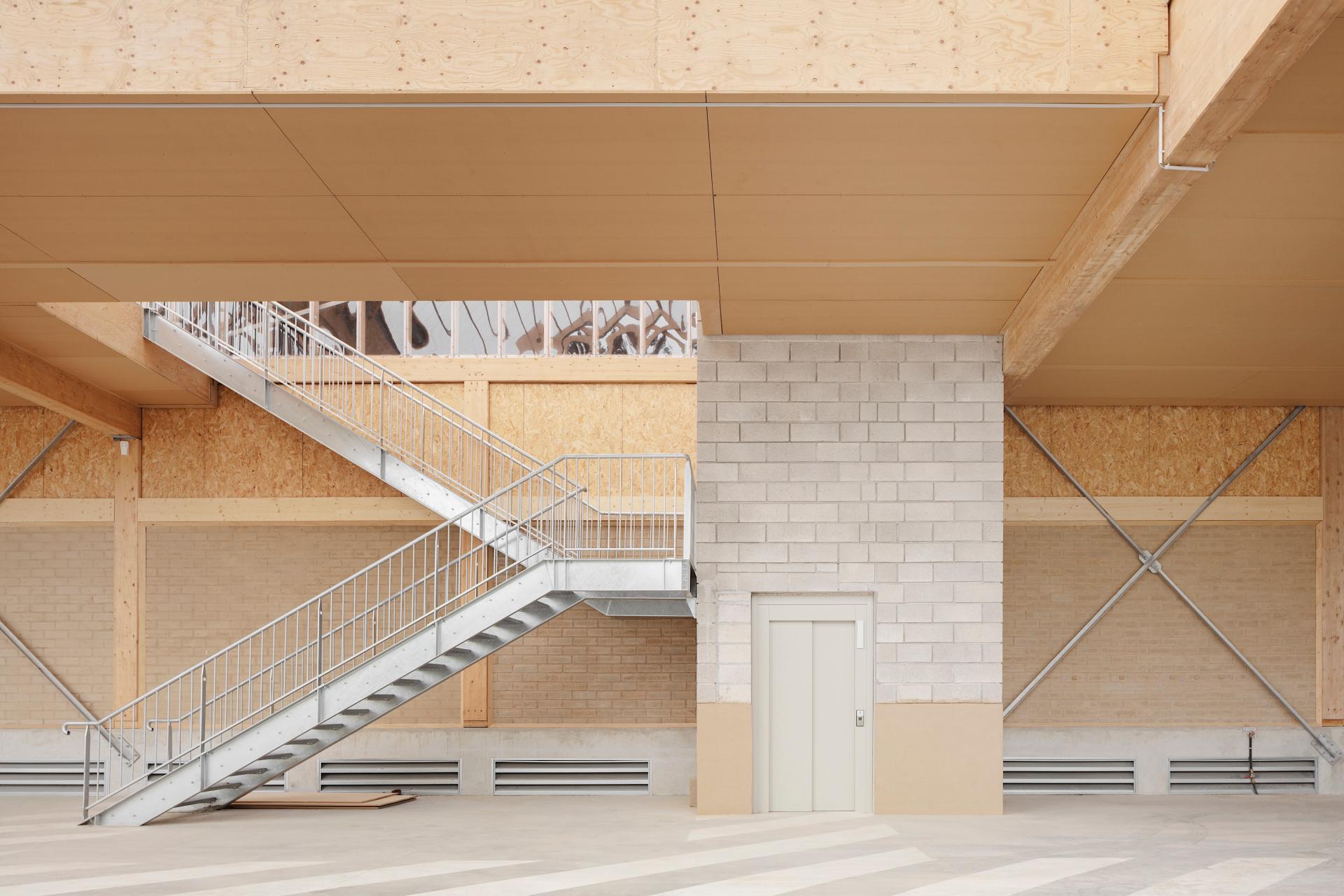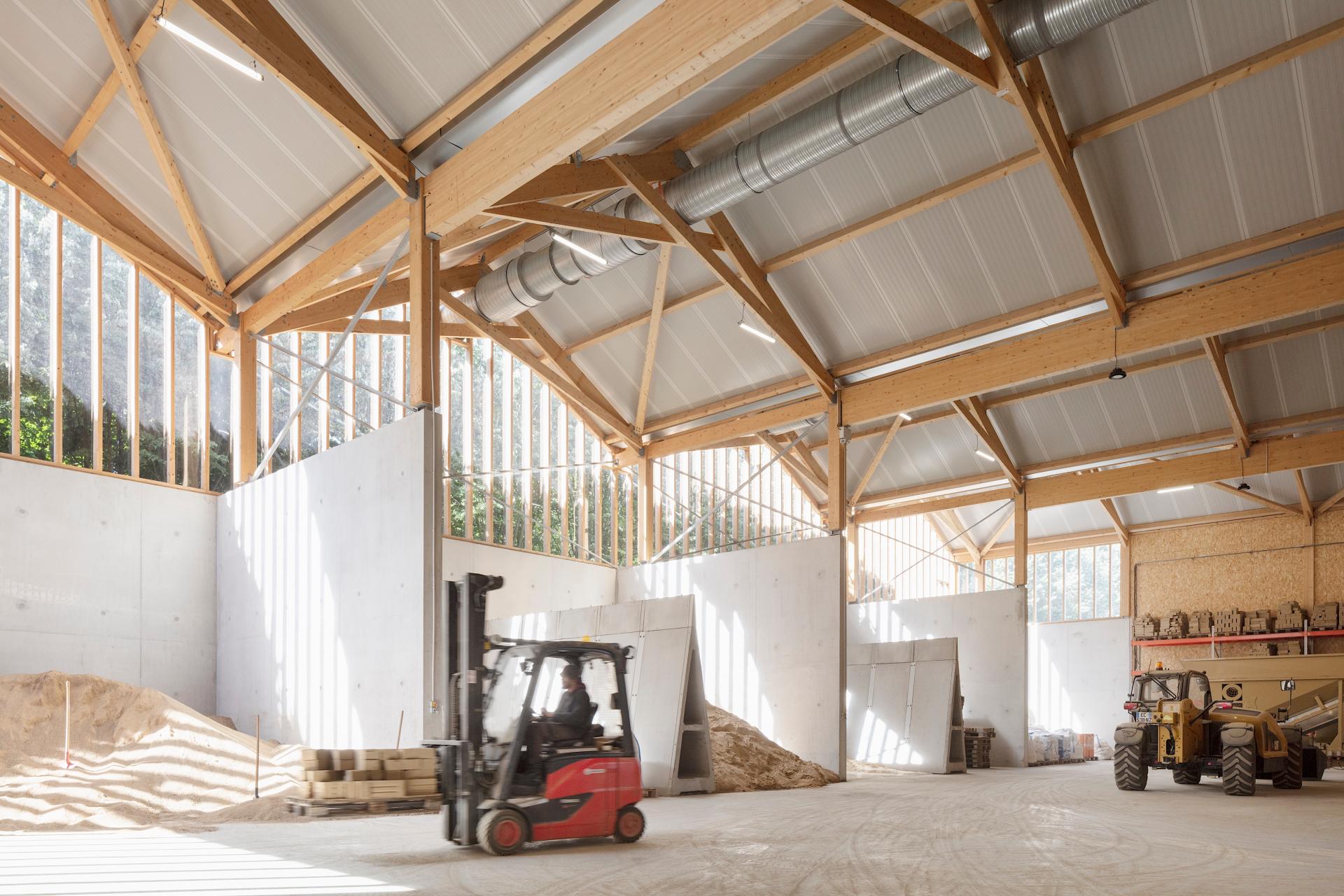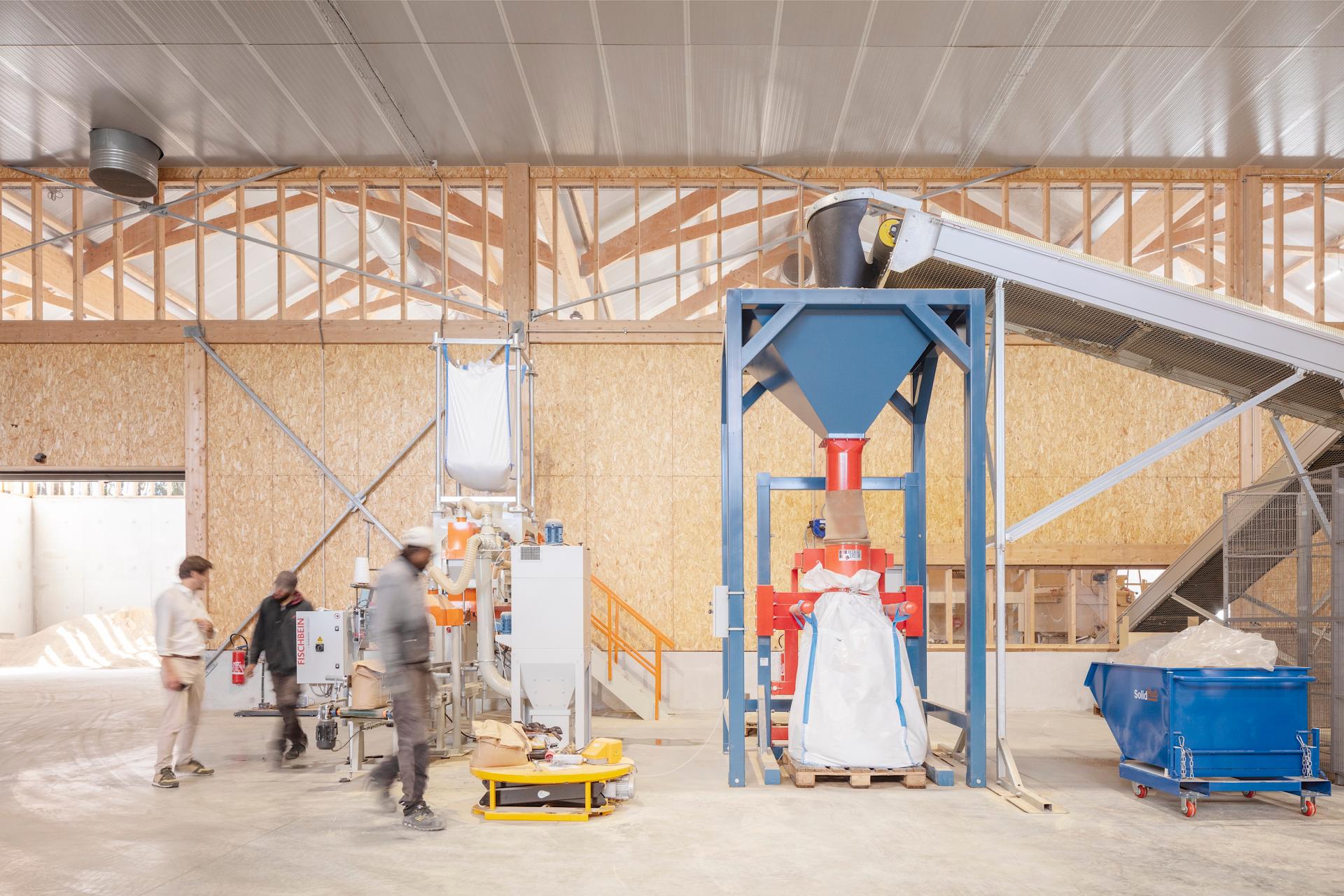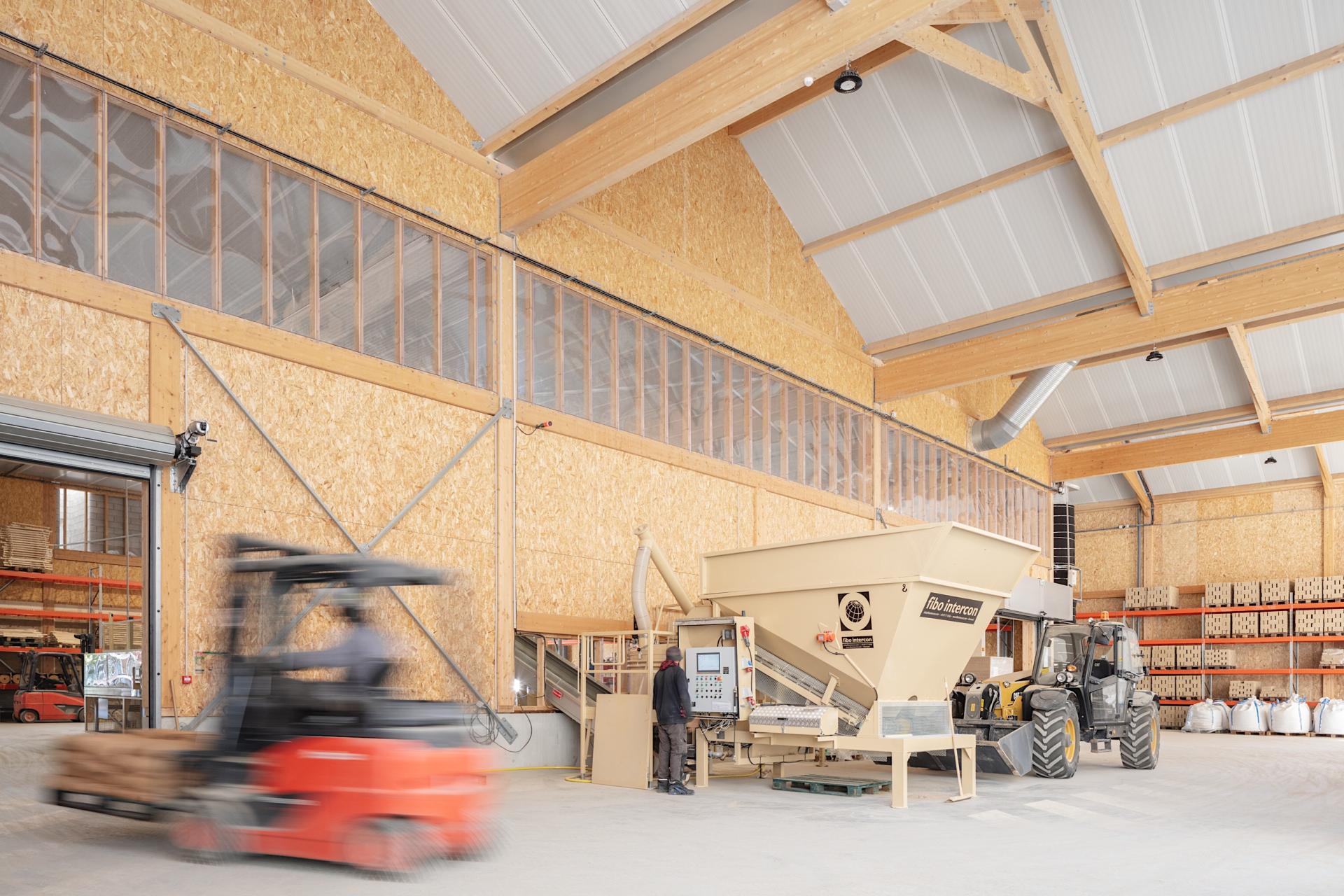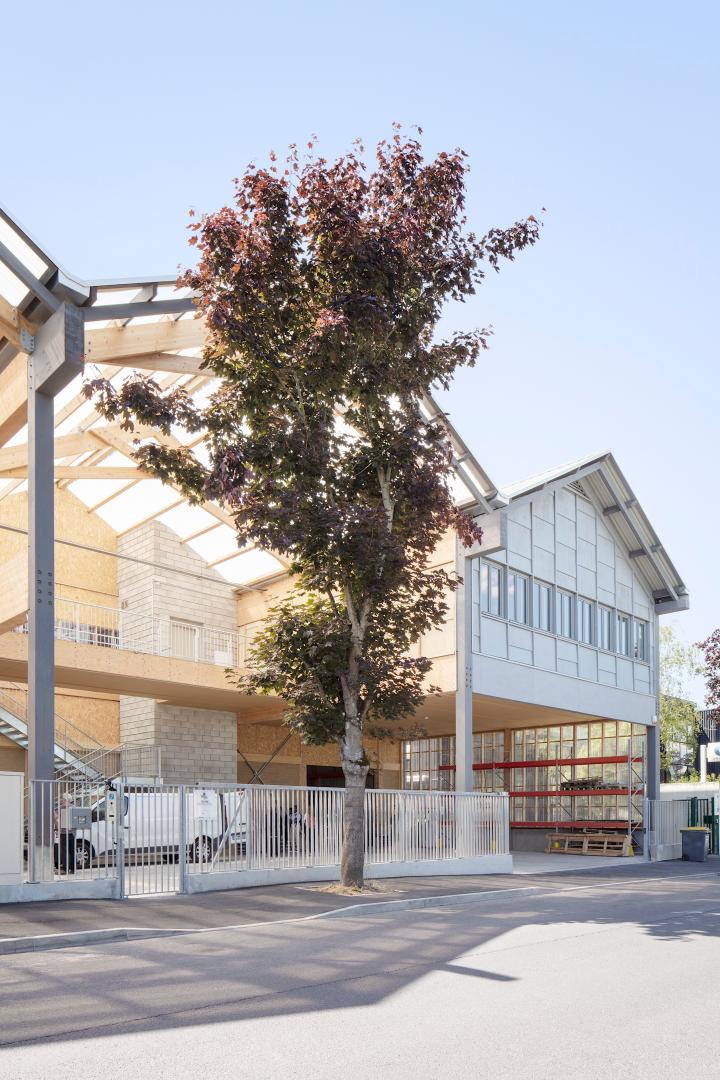EARTH CYCLE FACTORY (CYCLE TERRE)
Basic information
Project Title
EARTH CYCLE FACTORY (CYCLE TERRE)
Full project title
CYCLE TERRE, Factory for transforming urban earth waste in raw earth construction materials
Category
Shaping a circular industrial ecosystem and supporting life-cycle thinking
Project Description
CYCLE TERRE, Factory for transforming urban earth waste in raw earth and ecological construction materials
Geographical Scope
Regional
Project Region
Ile de France / Great Paris (Paris' region), France
Urban or rural issues
Mainly urban
Physical or other transformations
It refers to a physical transformation of the built environment (hard investment)
EU Programme or fund
Yes
Which funds
Other
Other Funds
Urban Innovative Action, 2017
Description of the project
Summary
In the world's major cities, millions of tonnes of earth are excavated each year as part of development and construction work. This natural excavated soil, considered in the regulatory sense as waste, is today mainly used in storage facilities, but also in recycling operations in non-built development projects (roads, spaces landscapes, etc.). The Cycle Terre factory aims to recycle part of this noble resource to manufacture construction materials while aiming to train construction stakeholders and the evolution of regulations allowing the use of materials.
Since 2022, cycle terre has recycled around 10.000 tonnes of earth to make brics, plasters and other materials already used for housing, public buildings for the Olympic Games 2024 and privates offices of health programs.
Since 2022, cycle terre has recycled around 10.000 tonnes of earth to make brics, plasters and other materials already used for housing, public buildings for the Olympic Games 2024 and privates offices of health programs.
Key objectives for sustainability
The Cycle Terre project aims for the following objectives:
· Launch a production line for construction materials from excavated soil (excavated soil), construction materials with very low environmental impact;
· Produce technical references for raw earth construction: 3 technical assessments (ATEx type A) are carried out as part of the project and submitted to a French certification body in order to secure uses and thus promote initiatives and investments ;
· Train building professionals (project managers, project owners, construction companies);
· Disseminate knowledge about the material: the consortium of 13 partners has the energy and contacts necessary to make the material known and convince those involved in construction in the Ile-de-France region to introduce raw earth into their future projects;
· Involve local residents in the process: inform and hire, train people in reintegration for the operation of the factory and for construction companies;
· Reduce costs and arduousness: targeted mechanization reduces manufacturing prices and reduces the physical efforts linked to handling;
· Facilitate the transfer of this new sector to other regions of Greater Paris and to other French and European metropolises via the publication of work reports at the end of the experiment.
· Launch a production line for construction materials from excavated soil (excavated soil), construction materials with very low environmental impact;
· Produce technical references for raw earth construction: 3 technical assessments (ATEx type A) are carried out as part of the project and submitted to a French certification body in order to secure uses and thus promote initiatives and investments ;
· Train building professionals (project managers, project owners, construction companies);
· Disseminate knowledge about the material: the consortium of 13 partners has the energy and contacts necessary to make the material known and convince those involved in construction in the Ile-de-France region to introduce raw earth into their future projects;
· Involve local residents in the process: inform and hire, train people in reintegration for the operation of the factory and for construction companies;
· Reduce costs and arduousness: targeted mechanization reduces manufacturing prices and reduces the physical efforts linked to handling;
· Facilitate the transfer of this new sector to other regions of Greater Paris and to other French and European metropolises via the publication of work reports at the end of the experiment.
Key objectives for aesthetics and quality
Beyond the commitments to help the development of the raw earth sector in Ile de France, and this is probably the essential subject, building with earth can above all lead designers to (re)think the architectural composition based on the resource . Offer new atmospheres, new spatial qualities. Indeed, imagining the shape of the building and its overall constructive system including structure, envelope and interior fittings, must not be, in the context of construction with raw earth, or even with all of the little-processed natural materials (organic). - and geo-sourced), a posteriori decision-making. Like the invention of modern architecture at the beginning of the 20th century (flat roofs, long windows, smooth expression of material, etc.), which was based on the emerging knowledge of concrete construction , the earth requires us to rethink our conceptual approach. It is no longer a question of designing projects and wondering what materials and construction systems will be suitable for their realization, but of reversing the design paradigm by adapting it to the resource material. The use of land implies, in the same vein, rediscovering a physical approach to the site. It is in fact important to go beyond a purely “cultural” contextual observation (economic, historical, technical, regulatory, typological, material approach, etc. of the integration of the architectural project into its site) and to open it to a logic of “natural” order. In doing so, a common story can be created – and collectively –. A story which links the major subjects of today through a story understandable by all, uniting around it citizens and actors in the act of building towards a shared objective, that of an architecture and a metropolis more adapted to its environment, more local, less carbon-intensive, more resilient, more anchored and more poetic, because also built on the foundations of its own soil.
Key objectives for inclusion
ETHICS : The choice of a cooperative company was made to promote democratic management and to limit the profits of the partners in favor of investment in activities that could benefit the land sector and the territory where it is established. The governance of the Cycle Terre project and the SCIC, once the factory is operational, is also based on an ethical charter signed by the 8 members to delimit the issues, understand the interests and differences of each individual and agree on the conditions for creating a virtuous land subsidiary in Île-de-France. This charter setting out the fundamental values of the project is taken from the Lyon declaration at the Terra 2016 global conference organized by CRATerre. It recalls the non-negotiable ethical values that this resource must continue to carry between humans and the Earth.
RECYCLING THE EARTH, A POLITICAL AND SOCIAL ISSUE : Earth is not a homogeneous material. Recognition of the physical characteristics of this material, accompanied by geological analyzes carried out in the soil of the Paris basin, show, on the contrary, a rich variety of soils. This diversity of soils encourages us to reconsider excavated material as valuable and recyclable resources for different uses of earth construction.
The governance of the project, then of the SCIC, is based on a charter signed by the partners to delimit the issues, understand the interests and differences of each and agree on the conditions for creating a virtuous earth subsidiary in Île-de-France. France. This charter setting out the fundamental values of the project is taken from the closing declaration of the Terra 2016 global conference, organized in Lyon from July 11 to 14, 2016. It recalls the ethical, essentially environmental and social, non-negotiable values that this resource must continue to maintain between humans and the Earth.
RECYCLING THE EARTH, A POLITICAL AND SOCIAL ISSUE : Earth is not a homogeneous material. Recognition of the physical characteristics of this material, accompanied by geological analyzes carried out in the soil of the Paris basin, show, on the contrary, a rich variety of soils. This diversity of soils encourages us to reconsider excavated material as valuable and recyclable resources for different uses of earth construction.
The governance of the project, then of the SCIC, is based on a charter signed by the partners to delimit the issues, understand the interests and differences of each and agree on the conditions for creating a virtuous earth subsidiary in Île-de-France. France. This charter setting out the fundamental values of the project is taken from the closing declaration of the Terra 2016 global conference, organized in Lyon from July 11 to 14, 2016. It recalls the ethical, essentially environmental and social, non-negotiable values that this resource must continue to maintain between humans and the Earth.
Results in relation to category
Today, the results of the adventure over 10 years and specifically since the beginning of the factory are as follows:
- Most of the construction players in Ile de France (architects, engineers, large construction companies, artisan masons, etc.) know about raw earth construction and its ecological potential, whereas almost no one knew about this material 5 years ago.
- Cycle Terre is one of the most visited non-public buildings in France with more than 4,000 visitors in less than 2 years.
- Hundreds of craftsmen, architects and engineers have been trained by land Cycle Terre networks.
- A raw earth construction collective in Ile de France (Collectif Terre Crue IDF) has been set up to continue communicating and training on the subject of raw earth.
- French regulations have evolved significantly on the subject of raw earth construction thanks to the 700,000 euros injected into new technical assessments by Cycle Terre.
- Nearly 10000 tons of rubble have been recycled to date with a target of 6000 tons per year within 2 years.
- Several Cycle Terre baby projects are planned in France, and some internationally.
- Most of the construction players in Ile de France (architects, engineers, large construction companies, artisan masons, etc.) know about raw earth construction and its ecological potential, whereas almost no one knew about this material 5 years ago.
- Cycle Terre is one of the most visited non-public buildings in France with more than 4,000 visitors in less than 2 years.
- Hundreds of craftsmen, architects and engineers have been trained by land Cycle Terre networks.
- A raw earth construction collective in Ile de France (Collectif Terre Crue IDF) has been set up to continue communicating and training on the subject of raw earth.
- French regulations have evolved significantly on the subject of raw earth construction thanks to the 700,000 euros injected into new technical assessments by Cycle Terre.
- Nearly 10000 tons of rubble have been recycled to date with a target of 6000 tons per year within 2 years.
- Several Cycle Terre baby projects are planned in France, and some internationally.
How Citizens benefit
During the 4 years of the project that have been finalized by the construction of the fabric, the city of Sevran and its citizens have been largely solicitated. Numerous presentation conference and participative meetings have been organized to interact with the local population. One of the key challenges was to transform the industrial passed of the city to a new vision of an ecological construction system. Citizens, school children and overall neighbors were asked to interact with the architectural and programmatic proposition and to help decide the final site or the degree of implication of the population in the fabrication system.
Furthermore, actions were launched from the start of the operation with training organized near the site for a dozen companions undergoing professional reintegration. Some of the latter were able to integrate the staff of the Factory, another the construction companies. Additional funding was put together to continue the training of building professionals (project managers, project owners, construction companies). The dissemination of knowledge on the material was also ensured by the SCIC website, by online documentation, by a current implementation guide and by a bimonthly information webinar. Beyond the acculturation to the material of those involved in the act of building in Île-de-France, one of the objectives was to facilitate the reproduction of this experiment in other municipalities in Greater Paris and in other European metropoles via the publication of work reports in open access at the end of the experiment.
Furthermore, actions were launched from the start of the operation with training organized near the site for a dozen companions undergoing professional reintegration. Some of the latter were able to integrate the staff of the Factory, another the construction companies. Additional funding was put together to continue the training of building professionals (project managers, project owners, construction companies). The dissemination of knowledge on the material was also ensured by the SCIC website, by online documentation, by a current implementation guide and by a bimonthly information webinar. Beyond the acculturation to the material of those involved in the act of building in Île-de-France, one of the objectives was to facilitate the reproduction of this experiment in other municipalities in Greater Paris and in other European metropoles via the publication of work reports in open access at the end of the experiment.
Physical or other transformations
It refers to a physical transformation of the built environment (hard investment)
Innovative character
Cycle Terre is an experiment aimed at demonstrating that it is possible to reuse excavated earth from construction sites as a main resource for the manufacture of ecological raw earth materials in order to build and rehabilitate the city. This solution has a double interest. Firstly, to partly replace conventional materials, mainly resulting from the very energy-intensive cooking of materials (cements, metals, terracotta, polymers, etc.), for numerous uses in buildings (interior walls, shear walls, filling of facades, etc.) thus making it possible to significantly reduce embedded carbon (embodied energy) in construction. Secondly, reintegrate this resource, considered today as waste to be disposed of and stored, in a local and truly sustainable material cycle.
Experimentation and research on the potential of inert earth spoil was extended as part of the exhibition “Terre de Paris, from matter to material”, which was held at the Pavillon de l'Arsenal, in 2016-2017. Paul-Emmanuel Loiret and Serge Joly, curators of the exhibition, and their scientific partners amàco and CRAterre, demonstrated that it was possible to reuse excavated soil from Greater Paris to build with raw earth. Hypothesis corroborated by the recent construction, in Villepreux in Yvelines (December 2020), of the first Ile-de-France building built in part with these excavated earth (School Thomas Pesquet).
Experimentation and research on the potential of inert earth spoil was extended as part of the exhibition “Terre de Paris, from matter to material”, which was held at the Pavillon de l'Arsenal, in 2016-2017. Paul-Emmanuel Loiret and Serge Joly, curators of the exhibition, and their scientific partners amàco and CRAterre, demonstrated that it was possible to reuse excavated soil from Greater Paris to build with raw earth. Hypothesis corroborated by the recent construction, in Villepreux in Yvelines (December 2020), of the first Ile-de-France building built in part with these excavated earth (School Thomas Pesquet).
Disciplines/knowledge reflected
Many types of disciplines and/or Knowledges have been involved in the design and implementation of the project. As seen previously, 13 partners were involved reflecting more than 20 different specialties from politics to urban project managers, from architects to civil and acoustic engineers, from geologists to researchers in physico-chemistry of matter, from sociologists to specialists in reintegration training for reemployment…
The methodology was to have a monthly meeting with all the partners and numerous small meetings each month depending on the tasks and reported in the monthly meeting.
The project is a systemic approach that only could have been realized by the complex coordination of the team.
The methodology was to have a monthly meeting with all the partners and numerous small meetings each month depending on the tasks and reported in the monthly meeting.
The project is a systemic approach that only could have been realized by the complex coordination of the team.
Methodology used
The approach is pragmatic but backed by research. In 2012, Paul-Emmanuel Loiret and Serge Joly, architects and teacher-researchers, tried to realize a building in Paris with raw earth material coming from Paris region. As no materials were found at this time in France, they had to import mud bricks from Germany. From there, to catch on ecological matters in construction, they decided to try helping create a sector of raw earth materials. Paul-Emmanuel Loiret became a researcher in CRAterre Laboratory in Grenoble. After having proposed several raw earth buildings to the city of Paris or the city of Ivry (Competition Réinventer Paris and Réinventer la Seine), they were able to organize with CRAterre and amàco labs a large exhibition in Paris on the possibility of recycling earth spoil into materials for ecological construction. From this exhibition, the city of Sevran contacted the architects to set up a project around raw earth and respond to the European call for projects Urban Innovative Actions...
How stakeholders are engaged
The project engaged 13 partners lead by the city of Sevran and Grand Paris Amenagement.
- the city of Sevran was responsible for project management and institutional relations;
- the developer Grand Paris Aménagement (GPA) was co-pilot of the project and was responsible for dissemination and information to project owners;
- the Antea Group technical design office was responsible for environmental studies and geological analyses;
- Paul-Emmanuel Loiret, from Paul-Emmanuel Loiret and Serge Joly, architects, proposed the project with the city, co-designed the program for the factory, designed the building, participated in the earth construction guide and training;
- the real estate developer Quartus carried the investment in construction and the process and relays with GPA to the project owners;
- the amàco research center was responsible for the selection of soils, the formulation, the design of the extrusions process, the guide and the training;
- the CRAterre-ENSAG laboratory managed the design of the block and coating manufacturing processes and participated in training;
- Labex AE&CC-ENSAG laboratory was responsible for certification for the evolution of regulations and the development of construction systems;
- Gustave Eiffel University (IFFSTAR) evaluated the impacts of the project on urban metabolism and transport-related carbon;
- the Science Po laboratory evaluated the governance of the project;
- the Compétence emploi training center took care of local reintegration training and employment linked to Cycle Terre;
- the Société du Grand Paris participated in steering committees and informs of its excavations;
- the land storage company ECT carried the investment in the land preparation center and manages the supply of land prepared before formulation.
- the city of Sevran was responsible for project management and institutional relations;
- the developer Grand Paris Aménagement (GPA) was co-pilot of the project and was responsible for dissemination and information to project owners;
- the Antea Group technical design office was responsible for environmental studies and geological analyses;
- Paul-Emmanuel Loiret, from Paul-Emmanuel Loiret and Serge Joly, architects, proposed the project with the city, co-designed the program for the factory, designed the building, participated in the earth construction guide and training;
- the real estate developer Quartus carried the investment in construction and the process and relays with GPA to the project owners;
- the amàco research center was responsible for the selection of soils, the formulation, the design of the extrusions process, the guide and the training;
- the CRAterre-ENSAG laboratory managed the design of the block and coating manufacturing processes and participated in training;
- Labex AE&CC-ENSAG laboratory was responsible for certification for the evolution of regulations and the development of construction systems;
- Gustave Eiffel University (IFFSTAR) evaluated the impacts of the project on urban metabolism and transport-related carbon;
- the Science Po laboratory evaluated the governance of the project;
- the Compétence emploi training center took care of local reintegration training and employment linked to Cycle Terre;
- the Société du Grand Paris participated in steering committees and informs of its excavations;
- the land storage company ECT carried the investment in the land preparation center and manages the supply of land prepared before formulation.
Global challenges
In the world's major cities, millions of tons of earth are excavated each year by development and construction work. This excavated soil, considered in the regulatory sense as construction site waste, is mainly sent to inert waste storage facilities (ISDI). In Sevran, the Cycle Terre project aims to recycle part of this land by considering it a contrario as a noble and local resource to build the Greater Paris of tomorrow, while aiming for training and the evolution of regulations allowing the implementation of ad hoc construction systems on an urban scale. The construction of the Cycle Terre factory, financed in particular by Europe, will produce from September 2021, in a short circuit, a range of eco-sourced products from this recovery resource, such as clay panels and raw earth blocks. (BTC) or wall coatings. These new material sectors can lead to changing the paradigm of architectural and urban design worldwide.
Learning transferred to other parties
The whole process of the project and the factory itself is online on our website in free access.
Replication are in process in different cities in France and we have been contacted by other countries.
The Cycle Terre project constitutes work with major ramifications aimed at recycling the main resource present in the basements of the Parisian metropolis. It already offers an operational as well as reflective reading around the earth cycle. The Cycle Terre factory appears today as the spearhead of the development of the raw earth sector in Île de France, and even in Europe; she served as a scout for projects like “Terre de Bruxelles”, carried out by BC Matérials, or TERRABLC in switzerland or for French building professionals wishing to make an ecological transition of their construction models. The medium scale of the Factory also aims for easy replicability in urban areas in order to reduce transport distances between material production sites and implementation sites.
Replication are in process in different cities in France and we have been contacted by other countries.
The Cycle Terre project constitutes work with major ramifications aimed at recycling the main resource present in the basements of the Parisian metropolis. It already offers an operational as well as reflective reading around the earth cycle. The Cycle Terre factory appears today as the spearhead of the development of the raw earth sector in Île de France, and even in Europe; she served as a scout for projects like “Terre de Bruxelles”, carried out by BC Matérials, or TERRABLC in switzerland or for French building professionals wishing to make an ecological transition of their construction models. The medium scale of the Factory also aims for easy replicability in urban areas in order to reduce transport distances between material production sites and implementation sites.
Keywords
reuse
recycle
ecological raw earth materials
ecological construction
cradle to cradle materials

